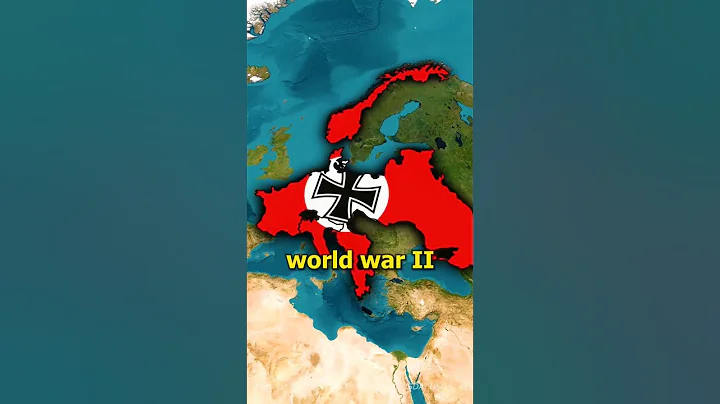
In 1997, when the Russians were worried about the disintegration of the Soviet Union and the poor economic situation, a piece of news about a windfall was undoubtedly a shot in the arm for them. It turned out that India came to the door at this time and said that they would return all the debts owed to the Soviet Union.
You must know that in the previous decades, the Soviet Union either provided infrastructure or weapons. The aid given to India was more than 10 billion US dollars. This amount of money was considered a huge sum at the time, which is regrettable. What is surprising is that India put aside the matter of repaying the money after receiving the benefits.

In fact, it can be seen from this point that when Russia was in decline, India changed its habit of not paying back the money it owed, which can be regarded as a timely help and a return to the prodigal son. Because of this, many Russians even expressed emotion: It seems I wrongly blamed Indians for .
However, the Russians never thought that India's repayment behavior was simply the result of "careful calculation", because they only paid back 3 million US dollars of 's debt of more than 10 billion US dollars. It stands to reason that such a discount method may only appear in fairy tales, but in fact, not only did India do this, but after receiving this "repayment", Russia could only choose to "break the front teeth and swallow the blood" .

Let’s talk to you today about why India only paid back 3 million when it clearly owed 10 billion? And after being so "insulted", did Russia "find" its banknotes in India?
After the end of World War II , because order was re-established, most countries at that time could be considered a member of the Soviet Union or the Western camp, and more or less participated in the subsequent cold war . However, what is interesting is that among the countries in Asia, Africa and Latin America, India can be said to be an outlier.

You must know that the territories of many Asian, African and Latin American countries have become fragmented at this time, and it is simply impossible to develop industry without assistance. However, after India became independent in 1947, it was able to use some of the infrastructure left by the British colonists to vigorously carry out the process of industrialization. At the same time, because the local cultivated land conditions were good, in just a few years, they relied on two Walking on one leg, it became a regional power.
Of course, if you look at it from another perspective, although India also has industrial plants and equipment, due to the lack of technical personnel, the development of industrial products has been slow, and the factories are also in disrepair, but no matter how you say it, their development The conditions can also be called "grabbing a good hand" at birth.

After the founding of the People's Republic of China, India was very clear about its positioning. They have always pursued the non-alignment policy , It stands to reason that such behavior will not receive too much attention. However, India is very large after all, so on the one hand , they had a strong say in the international community at that time and often verbally mediated conflicts between various parties; on the other hand, Indians often gained benefits by repeatedly jumping between the two camps of the United States and the Soviet Union. It has to be said that India at that time was completely that took both sides to the extreme.
In the mid-1950s, the Cold War situation gradually intensified. As the party that suffered the most serious damage in the war, the Soviet Union and the United States lost in the first round of the confrontation. For this reason, in order to increase the number of "friends" , the Soviet Union began to provide assistance to third world countries, and among them, India has become the number one recipient of assistance because it has a certain industrial base.

In fact, before this, maybe it was because of the British colony, or maybe it was because Stalin originally looked down on India, which relied on " non-violence and non-cooperation " to fight for independence. Therefore, the Soviet Union's attitude towards India has always been lukewarm. Not hot.However, just in 1955, with Khrushchev coming to power, India also had the opportunity to make a leap.
At that time, due to the lack of technical personnel at the largest Bhilai Steel Plant in India, workers had to "manually make iron" for a long time. Not only was the efficiency extremely low, but many accidents occurred. However, Khrushchev obviously saw India's potential, so under his instruction, a large number of Soviet experts went to the Bhilai Steel Plant. While guiding India's industrial level, they also offered a sum of 12 years In 2016, the aid loan was worth 500 million rubles , but the interest rate was only 2.5%.

According to the exchange rate at the time, this loan could even build two steel plants of the same level. Based on the annual interest rate of only 2.5%, this was completely regarded as a big gift. Otherwise, the Soviet Union was " "Big Brother", After this assistance, various experts and loans continued to enter India.
By 1956 alone, the Soviet Union had turned aid worth more than 1 billion US dollars into real industrial facilities in India. In contrast, the Marshall Plan carried out by the United States to Germany after the war also amounted to more than 1 billion US dollars, and With this blood transfusion, Germany even jumped from a devastated defeated country to a European power again. From this, we can also see what kind of assistance India received.

However, there were also some opposing voices within the Soviet Union at that time. On the one hand, many experts were offended by the local "customs" after going to India for guidance, and they all said that they could not do the job; on the other hand, while receiving assistance from the Soviet Union, India also never forgot to please. U.S.
For example, if they accept machine tools from the Soviet Union today, they will ask the United States for some bearings tomorrow on the pretext of balancing. As the Soviet Union's number one opponent, the United States will naturally be very happy to "give them away." Because of this, although India only received aid from the Soviet Union on the surface, it actually made a lot of money.

This undoubtedly caused dissatisfaction with the Soviet Union. However, in the early 1960s, due to various reasons, they had to continue to strengthen loans to India. And this assistance lasted for nearly 30 years. Even during the Gorbachev period when the situation was very turbulent, India received a lot of loans from the Soviet Union. Finally, until the eve of its disintegration in 1988, the Soviet Union provided India with The assistance came one after another.
In a total of more than 30 years of assistance, India received more than 10 billion rubles in loans from the Soviet Union. At that time, the exchange rate between the US dollar and the ruble was 1.1:1. From this perspective, the Soviet Union’s assistance to India was considerable. big. In fact, India did rely on the Soviet Union to achieve today's industrialization. According to data, 60% of their oil production came from Soviet aid, not to mention the output value of other industrial facilities.

What is frustrating is that during this period, India basically did not pay back a penny to the Soviet Union. In addition to the inability to repay due to objective reasons, subjectively, India also had no willingness to repay the money. Perhaps because of their It seems that as a major country in the South Asian subcontinent, has relieved a lot of pressure on the Soviet Union. Therefore, this amount of money is completely deserved.
However, despite thinking so, India, as a big country, cannot be vague about its credibility. Because of this, they finally got the opportunity amid repeated pulls with the Soviet Union.

In December 1991, the Soviet Union finally lost the Cold War, and Russia, as the largest federation, not only inherited 70% of the Soviet heritage, but also inherited more than 100 billion US dollars in foreign debt from the Soviet Union, and this is exactly what happened. This was the reason why Russia could not recover its economy at that time.
Next is what we talked about at the beginning. The independence of Russia is undoubtedly an opportunity for India to pay back the money. This is because the disintegration of the Soviet Union made the ruble from a currency equal to the US dollar to a "worthless" waste paper When the Soviet Union first disintegrated, the exchange rate was that 1 U.S. dollar could be exchanged for about 300 rubles. By when India paid back the money in 1997, the exchange rate between the U.S. dollar and rubles even reached 1:3,000. Because of this, they only paid more than 3 million US dollars to Russia.

From a certain point of view, India's calculation this time was very shrewd, because the US dollar was already the world's common currency at that time, so no matter how difficult it was for Russia to accept, there was no reason to refuse, not to mention, 3 million The U.S. dollar was less, but Russia was so poor at the time that could only endure the nausea and accepted it. For India, such a deal was simply a big pie falling from the sky.
However, as the saying goes, "Sooner or later, you will have to pay back the money you come out to work." India never expected that just one year later, they would be severely "slaughtered" by Russia. It turns out that the Soviet Union not only provided industrial assistance to India, but also spent a lot of money on military assistance. However, with the long-term assistance, India also became dependent on Soviet weapons.

In 1998, India leased a former Soviet-era Charlie-class submarine from Russia. What the Indians didn’t expect was that the other party offered a rent of US$100 million a year. At the same time, this did not include personnel training. , the cost of technology upgrades. You know, the submarine was a product decades ago, and it was basically only able to sail, so the rent of 100 million US dollars a year is obviously too high, Of course, Indians are also aware of this situation. , however, they have always had the ambition to dominate, so even if wants to be taken advantage of, it will still suffer the loss of being dumb.
However, what Russia did not expect was that they originally thought they would only make money once, but after that, India "repaid" all the debts through military purchases.

Because within two days after India brought the submarine back to its home country, the Charlie-class submarine crashed into a large hole during training. In desperation, India had to send it back to Russia for repairs. How could it care about the deal that was sent to it? The reason not to do it? In this way, Russia was "smoothing foreign workers" while leveraging more than 3 billion US dollars in maintenance costs from India.
Later, in addition to submarines, India also purchased various expensive Russian weapons, but almost every one of them would pay the other party a profit several times the original price due to objective reasons. According to India's current situation, it is still difficult to stand on its own. Judging from the level of the military industry, 's "debt repayment" behavior for Russia will continue for a long time.






















